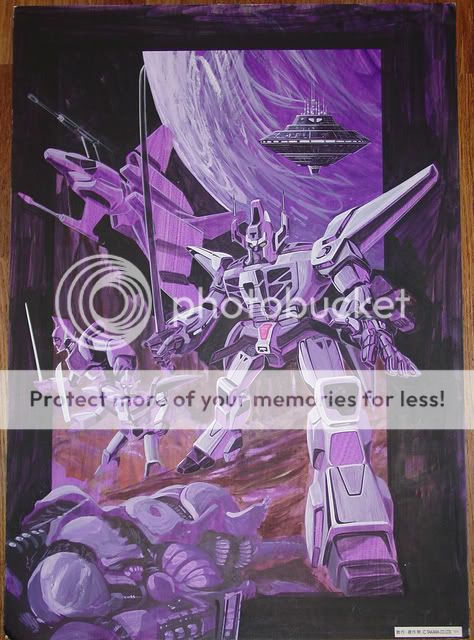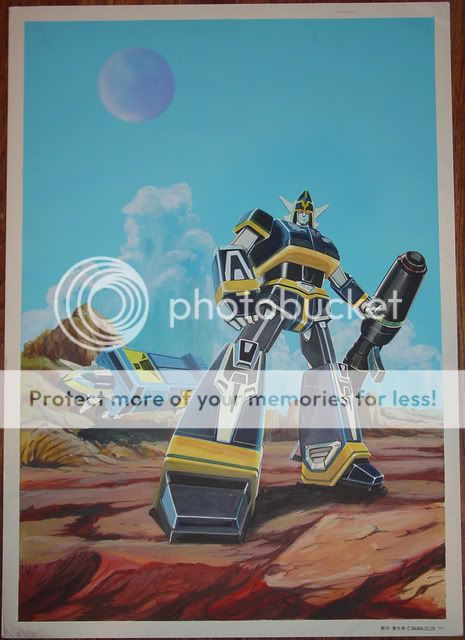Raiden
Wakanda Forever
- Joined
- Apr 25, 2002
- Messages
- 30,004
- Reaction score
- 498
- Points
- 48
VI. Transformers Beginnings
Now we come to the point in the history of the actual Transformers toys that many TF fans might be familiar with. Let's start at the beginning and bring things up to speed with a quick timeline:
1964 - US toy company Hasbro introduces the 12 inch tall soldier doll "G.I. Joe"
1970 - G.I. Joe brought to Japan and sold by Takara toy company as "Combat Joe"
1971 - Takara releases Combat Joe dolls with superhero costumes and sci-fi themes and accessories (a concept similar to the Captain Action doll from the 1960s)
1972 - Takara introduces the "Henshin Cyborg", a 12 inch Combat Joe spin-off doll with clear robot body parts and a metallic head

Henshin Cyborgs with G.I. Joe
1974 - Takara produces smaller 3.75 inch tall versions of the Henshin Cyborg and calls this new toy series "Microman"

1975 - Microman vehicles and robots are produced. They don't transform, but they have interchangeable parts
1976 - Microman figures and vehicles brought to the US and sold by Mego as "Micronauts"
1980-81 - Takara introduces the "New Microman" toy line featuring the 3.75 inch tall miniature cyborgs with new special battle machines and playsets.
A spin-off toy line from this is also introduced by Takara, called Diaclone (AKA "Diakron") - a series of vehicles and combiner robots that are driven by human-sized cyborg pilots. The scale of these toys is 1/64, so the pilot figures are only one inch tall. The original 1980-81 Diaclone robots (mostly combiners) were designed by Shoji Kawamori and Kazutaka Miyatake, who would later go on to design the mecha for Macross.

1980 Diaclone catalog
1982 - The first two transforming "Car Robots" are introduced as part of the Diaclone line. These will later go on to be released in the US as the Autobots "Sunstreaker" (after a color change to yellow) and "Ironhide", so these are technically the first of the Transformers.

1982 Diaclone catalog
Also in 1982 - Popy releases the first toys in its transforming "Machine Robo" series, that will later be released as Gobots in the US by Tonka in '84 .

1983 - Another spinoff from the New Microman toy series debuts from Takara - "MicroChange", a series of minature robots and vehicles disguised as life-size tools and houshold items. This first wave of MicroChange toys includes several robots that will go on to be Transformers, including the Walther P-38 "Gun Robo" (Megatron) and "Cassette Man" (Soundwave). Also included in this first wave of MicroChange are the "Mini Car Robo" robots, intended to be disguised as toy "penny racer" cars. These will later become the Transformers mini Autobots "Cliffjumper", "Bumblebee", "Gears", "Brawn", "Windcharger", "Huffer", and the so-called "Bumblejumper".

Microman/MicroChange 1983 catalog page
Meanwhile, the 1983 Diaclone wave introduces many more future Transformers, including "Battle Convoy" (Optimus Prime), "Jet Robo" (Starscream/Thundercracker), and the "Insecter Robo" (Insectacons).

1983 Diaclone catalog pages
Finally and perhaps most importantly, 1983 was the year that Hasbro representitives visited the Tokyo Toy Fair, saw the potential in the Diaclone and MicroChange toy lines, and made the historic deal with Takara to market these toys in the US under a new name and storyline.
Next...More than meets the eye!
It appears that the Autobot combiner Raider (made up of six Trainbots) were created back in 1983, and not at the end of 80's with the Headmasters line.




















































